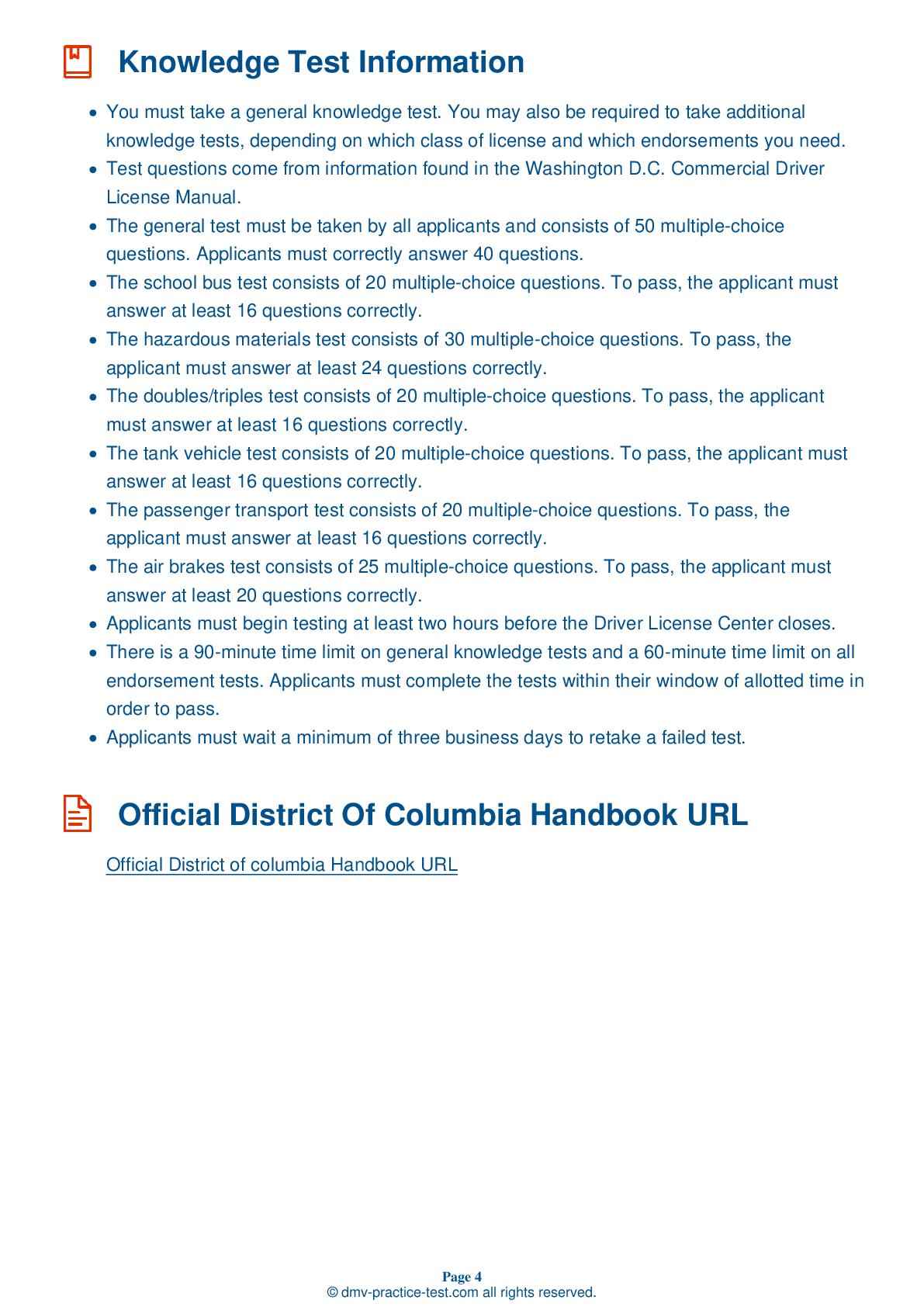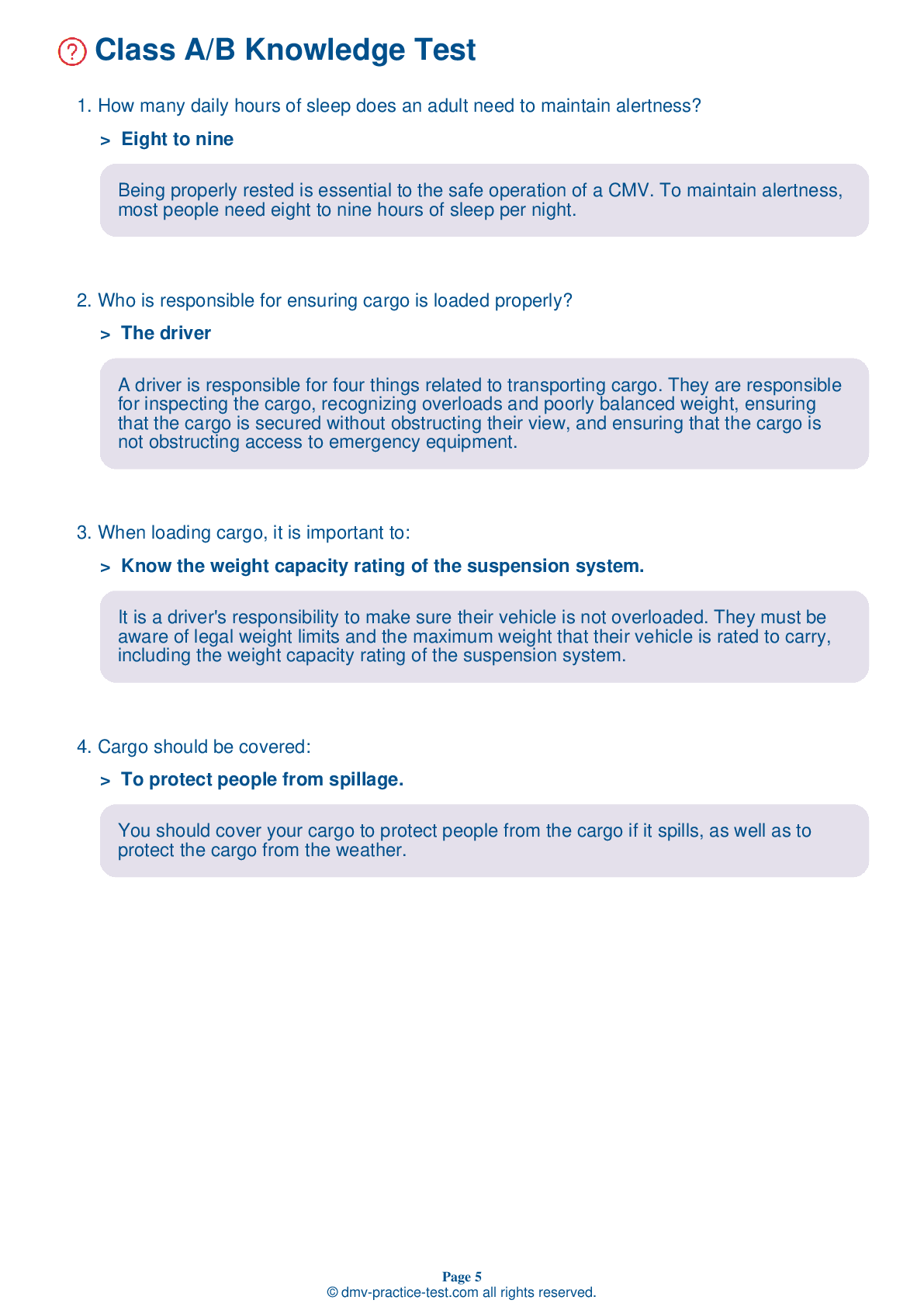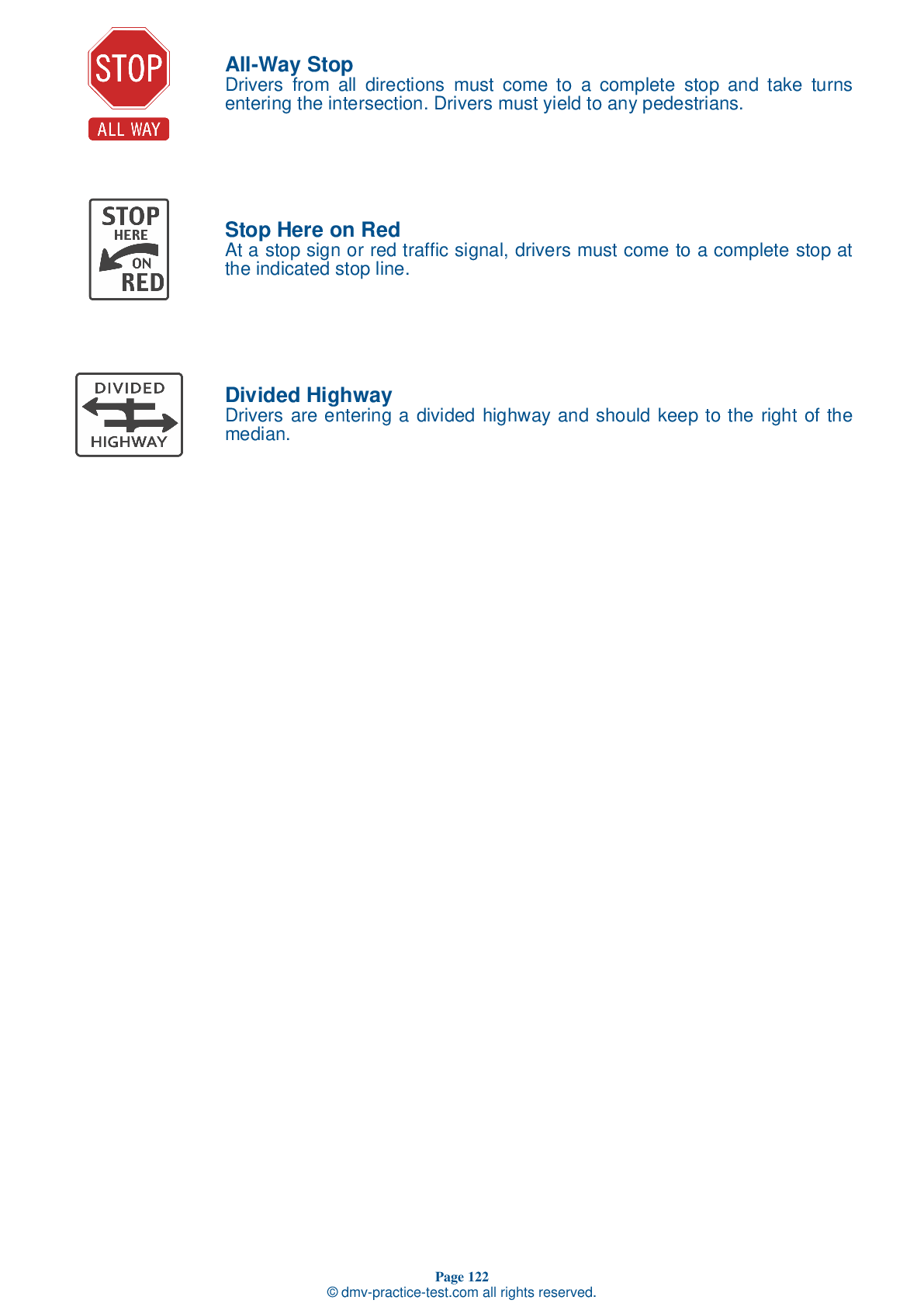Combination #1
Combination Vehicles Practice Test | District Of Columbia 2025 #1 Page 2 of 3
Train for FREE online with our District Of Columbia CDL combination vehicle test. The official exam test consists of several obligatory parts, with all of them checking your knowledge of different blocks of road rules. If you need to obtain a DC combination license in 2025, practice as much as possible. Free sample tests published on our website will help you check and improve your knowledge and boost your grades. Please bear in mind that DMV requirements for issuing a combination license may vary from state to state.
20
16
20
8 . If a trailer begins to skid, the driver should:
Accelerate.
If your trailer starts to skid while you are braking, you should release the brakes and allow them to begin to regain traction. Once its wheels have regained their grip on the road, the trailer will begin to straighten out and follow the tractor.
9 . Failure to keep the fifth wheel plate properly greased could:
Affect the lights.
Failure to keep the fifth wheel plate properly lubricated can create friction between the tractor and trailer, causing steering problems.
10 . To prevent a rollover, a driver should:
Turn quickly.
Rollovers can happen when a combination vehicle is turned too quickly. To help prevent the risk of rollover, it is important to keep the vehicle's center of gravity low by loading cargo as close to the ground as possible.
11 . When glad hands are coupled, the seals should be pressed together at an angle of:
90 degrees.
When coupling, be sure to couple the proper glad hands. When glad hands are connected, the seals should be pressed together at a 90-degree angle.
12 . Rollovers happen when:
ABS is working effectively.
Rollovers happen when a vehicle is driven too fast. To reduce the risk of rollover, make sure the weight of cargo is loaded low to the ground, and that you take turns and curves slowly.
13 . A trailer will be most likely to swing around when:
The wheels are rotating.
An empty trailer will require a longer stopping distance than a loaded trailer. Additionally, a trailer is most likely to swing out and strike other vehicles when it is lightly loaded or empty.
14 . When driving a combination rig, following distance should be:
Longer than when driving a single vehicle.
In comparison to driving a single vehicle, you should maintain an extended following distance when driving a combination rig. Combinations require longer stopping distances than smaller vehicles.
2025 District Of Columbia | Frequently Asked Questions
In the District of Columbia, you can acquire a CDL Tank endorsement by first holding a valid CDL. You need to pass the Tank Vehicle written test, which covers topics like inspecting tank vehicles, driving tank vehicles, and safe driving rules. After passing the test, you pay the required fee to add the endorsement to your CDL.
To obtain a CDL Tank license in the District of Columbia, you must first have a valid Commercial Driver's License (CDL). Then, you must take and pass the Tank Vehicle written test, which covers topics such as inspecting and driving tank vehicles, and safe driving rules. After passing, pay the necessary fee to add the endorsement to your CDL.
While the District of Columbia doesn't explicitly require specific training or experience for a CDL Tank endorsement, it's highly recommended. Understanding how to safely operate tank vehicles is crucial. Passing the Tank Vehicle Endorsement Knowledge Test requires knowledge of tank vehicle operations, so training or experience can be beneficial in passing the test.
Yes, for a CDL Tank endorsement in the District of Columbia, you must pass the Tank Vehicle written test. This exam covers important topics like inspecting tank vehicles, driving tank vehicles, and safe driving rules. Passing this test is crucial to demonstrate your knowledge and understanding of operating tank vehicles safely.
The written test for the CDL Tank endorsement in the District of Columbia covers a variety of subjects. These include inspecting tank vehicles, driving tank vehicles, and understanding the unique handling characteristics of tank vehicles. It also tests knowledge on safe driving rules and regulations specific to tank vehicles.
During the CDL Tank endorsement assessment, several skills and maneuvers are assessed. These include inspecting the tank vehicle for safety, demonstrating proper loading and unloading procedures, controlling the vehicle's speed and position, performing backing maneuvers, and executing turns and lane changes safely. Additionally, candidates are evaluated on their ability to handle emergency situations and demonstrate knowledge of hazardous materials regulations.
Drivers with a CDL Tank endorsement in the District of Columbia must comply with specific federal and state regulations. These include restrictions on maximum driving hours to prevent fatigue, mandatory rest periods, and stringent vehicle inspection requirements. Additionally, they must follow rules related to the transportation of hazardous materials if their tank vehicle is used for such purposes.
No, a valid CDL Tank endorsement is required to legally transport liquid or gas materials in the District of Columbia. This endorsement is necessary due to the unique handling and safety requirements associated with transporting such materials. Violating this requirement can result in significant penalties, including fines and suspension of driving privileges.
You can add the CDL Tank endorsement to your existing Commercial Driver's License (CDL) without needing a fresh application. However, you will need to pass a written knowledge test specific to tank vehicles and pay the necessary endorsement fee. Remember, additional endorsements may require further testing.
Yes, to handle hazardous materials with a CDL Tank endorsement, you must also obtain a Hazardous Materials (HazMat) endorsement. This requires passing an additional written test and undergoing a federal background check. Also, adherence to specific regulations regarding the transportation and handling of such materials is mandatory.



